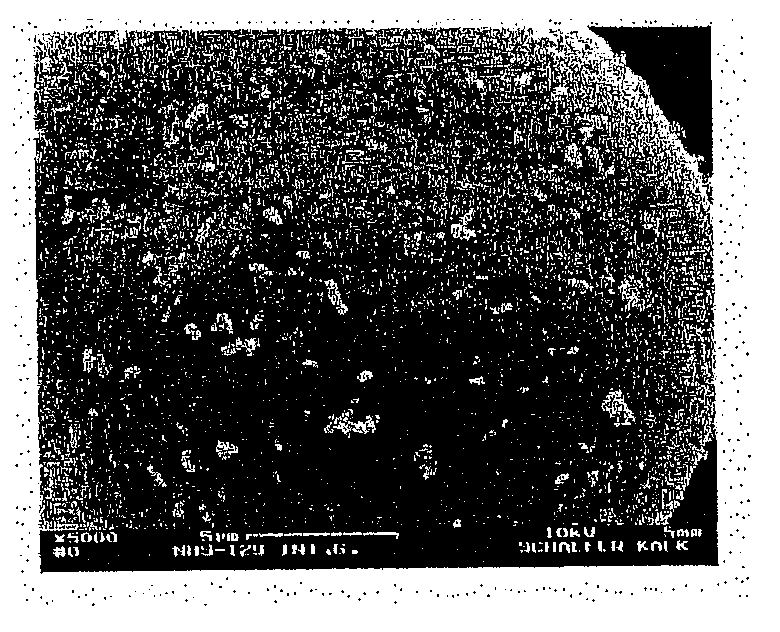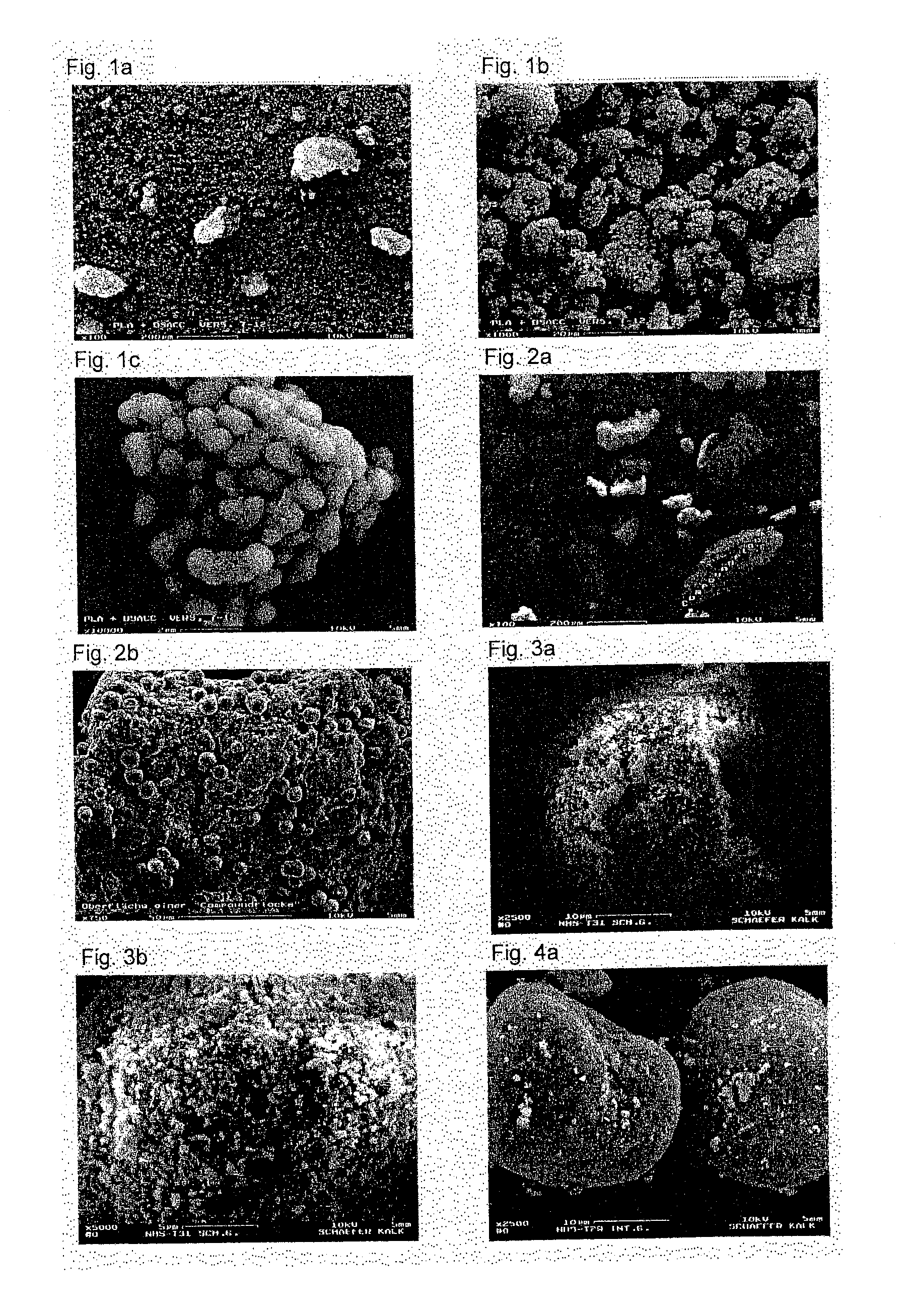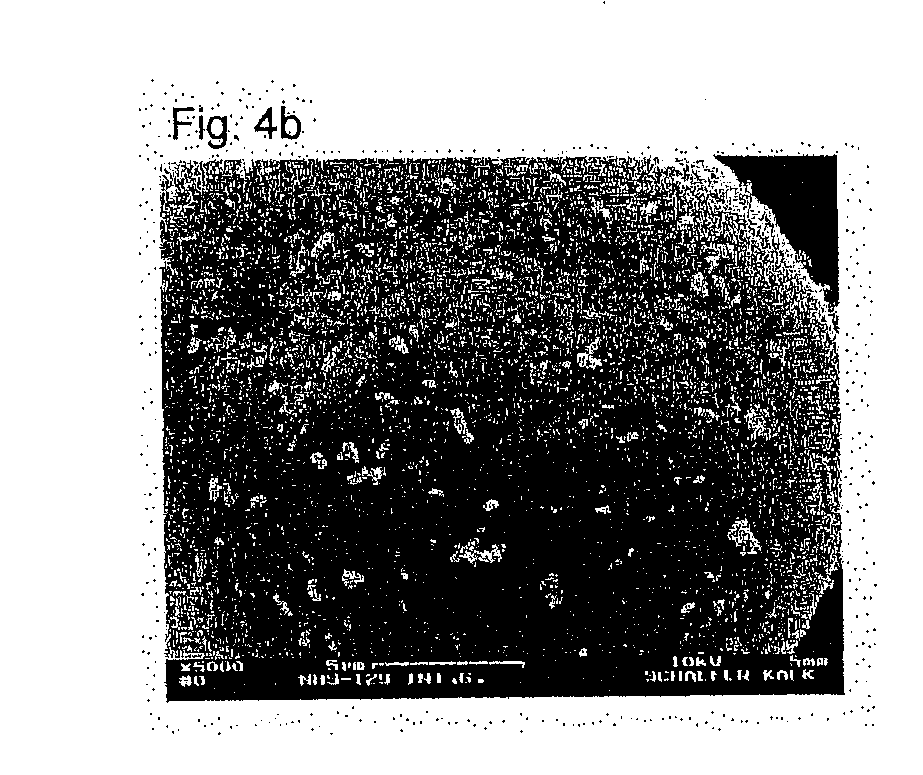Microstructured Composite Particles
a composite particle and microstructure technology, applied in the field of microstructured composite particles, can solve the problems of porous resin particle structure, and high cost and inconvenience, and achieve the effect of reducing the cost of the end produ
- Summary
- Abstract
- Description
- Claims
- Application Information
AI Technical Summary
Benefits of technology
Problems solved by technology
Method used
Image
Examples
example 2
[0235]Microstructured composite particles comprising calcium carbonate spheres (spherulites; SPH) and an amorphous polylactide (PLA) were prepared as described in Example 1 using NHS 0. The same polylactide pellet material as described in Example 1 was used as mother particles, while calcium carbonate spheres (spherulites) having an average particle diameter of 7 μm were used as the baby particles.
[0236]16 g of polylactide pellet material were mixed with 4 g of CaCO3 powder and filled at 5000 rpm. The rotor speed of the assembly was adjusted to 16 000 rpm (100 m / s) and the added materials were processed for 1 min. Altogether 5 repeats were carried out with the same quantities of materials and the same machine settings. Altogether 85 g of structured composite particles were obtained.
[0237]The SEM analysis of the structured composite particles obtained is depicted on the following SEM pictures. The PLA surface is only partly covered with the calcium carbonate spheres (spherulites) (se...
example 3
[0238]Microstructured composite particles comprising a calcium carbonate of mixed particulate shape (scalenohedra and needles; Schaefer Precarb® 400) and a fine powder based on polyamide-12 (PA12) were prepared using NHS 1. Cold water at 12° C. was used for cooling. PA12 (average particle size 50 μm) was used as mother particles, while Schaefer Precarb® 400 calcium carbonate (average particle size 0.7 μm) was used as the baby particles.
[0239]85 g of PA12 powder were mixed with 15 g of Schaefer Precarb 400 CaCO3 powder and filled at an assembly rotor speed of 4000 rpm (50 m / s). The added materials were processed for 1 min. Altogether 8 repeats were carried out with the same amounts of materials and the same machine settings. Altogether about 760 g of structured composite particles were obtained.
[0240]The SEM analysis of the structured composite particles obtained is depicted in FIG. 3a, 3b.
[0241]The CaCO3 content determined using thermogravimetric analysis was 14.4% of PCC.
[0242]The...
example 4
[0243]Microstructured composite particles comprising a calcium carbonate of mixed particulate shape (scalenohedra and needles; Schaefer Precarb® 400) and a fine powder based on polyamide-12 (PA12) were prepared using NHS 1. Cold water at 12° C. was used for cooling. PA12 (average particle size 50 μm) was used as mother particles, while Schaefer Precarb® 400 calcium carbonate (average particle size 0.7 μm) was used as the baby particles.
[0244]85 g of PA12 powder were mixed with 15 g of Schaefer Precarb 400 CaCO3 powder and filled at an assembly rotor speed of 8000 rpm (100 m / s). The added materials were processed for 3 min. Altogether 2 repeats were carried out with the same amounts of materials and the same machine settings. Altogether about 196 g of structured composite particles were obtained.
[0245]The SEM analysis of the structured composite particles obtained is depicted in FIG. 4a, 4b.
[0246]The CaCO3 content determined using thermogravimetric analysis was 14.1% of PCC.
[0247]Th...
PUM
| Property | Measurement | Unit |
|---|---|---|
| Length | aaaaa | aaaaa |
| Length | aaaaa | aaaaa |
| Fraction | aaaaa | aaaaa |
Abstract
Description
Claims
Application Information
 Login to View More
Login to View More - R&D
- Intellectual Property
- Life Sciences
- Materials
- Tech Scout
- Unparalleled Data Quality
- Higher Quality Content
- 60% Fewer Hallucinations
Browse by: Latest US Patents, China's latest patents, Technical Efficacy Thesaurus, Application Domain, Technology Topic, Popular Technical Reports.
© 2025 PatSnap. All rights reserved.Legal|Privacy policy|Modern Slavery Act Transparency Statement|Sitemap|About US| Contact US: help@patsnap.com



